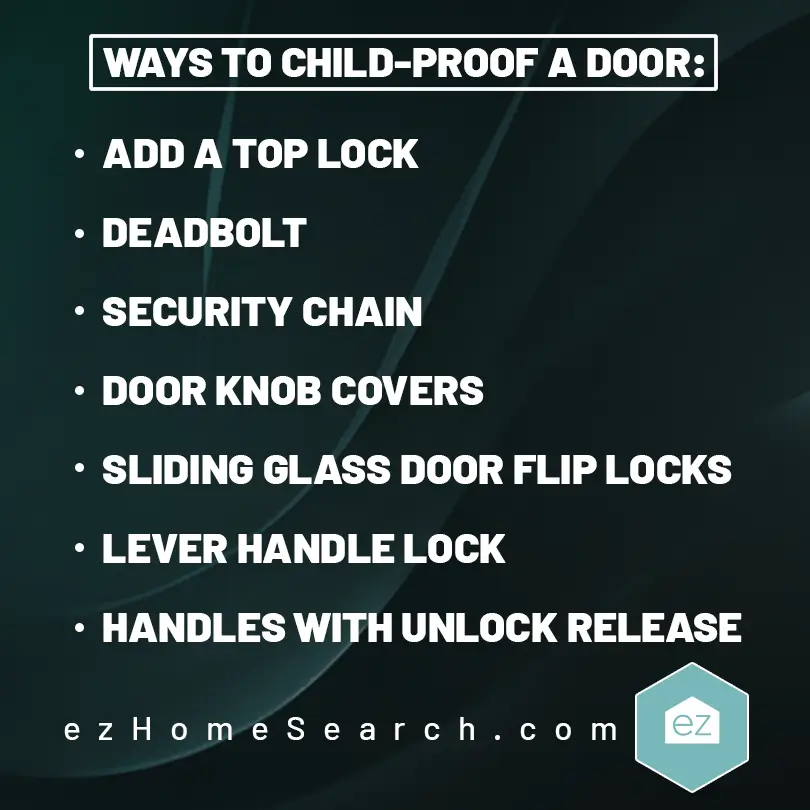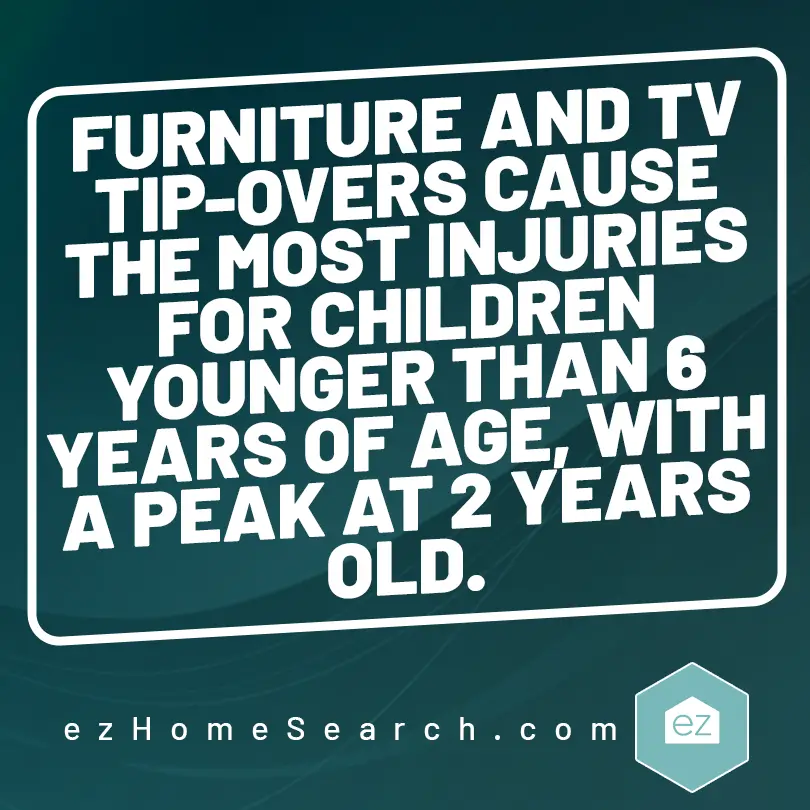How to Make Your Home Safe For Kids
To kids, our homes are an adventurous obstacle course waiting for exploration. Those innocent-looking coffee tables and inviting staircases are no less than a Mount Everest expedition for those adorable, tiny explorers. And let’s not forget the magical land of “under the sink,” where colorful cleaning bottles beckon further opening. So, while our homes are our castles, let’s make these castles safe for our little princes and princesses.
Home child-proofing measures significantly reduce the likelihood of home accidents, creating a sanctuary where your child’s curiosity can bloom safely. It’s a proactive approach to creating spaces where your family can grow and thrive without constant fear of potential hazards. Child-proofing your home involves looking at your home from a little one’s eyes and finding all the “fun” ways they could explore–and potentially run into harm. To get you started, this lists different areas of concern for families to child-proof.
Securing Doors and Latches
One of my neighbor’s favorite stories is the one where they came down in the morning to find their back door open. When they checked their camera, they found their three-year-old daughter had opened the door and wandered around their backyard at 2 am–with them none the wiser! Luckily, their yard was fenced, and their toddler returned safely to bed.
Children are natural explorers, so curious about the world. That adventurous spirit leads them to venturing into areas where they may be unsafe. Unfenced pools, busy streets, and unfamiliar surroundings pose serious threats. And as any experienced parent knows, all it takes is a minute for a pioneering toddler to slip outside unnoticed through an unsecured door or window.
Installing child-proof door locks and window guards prevents little ones from opening them themselves. In addition, installing alarms on doors leading outside provides an extra layer of security. You’ll know when a door opened when your back was turned, or when you stepped out for a minute. Keeping children safe in our neighborhoods starts by knowing when they’ve gone outside.
As part of your home child-proofing strategy, don’t underestimate the importance of addressing interior doors. Little hands can quickly turn door knobs or accidentally hit the lock, only to realize they don’t know how to open them from the inside. Imagine the child’s panic when they can’t leave the bathroom they just entered– and for the adults outside. Safety door knob covers can easily be operated by an adult while preventing small kids from opening or accidentally locking. Add these covers on any room where there’s a risk of a child getting locked inside, such as bathrooms, bedrooms, and utility closets.
Finally, door stoppers ensure that doors don’t close accidentally, preventing small fingers from getting pinched.

Safer Kitchens
Families love to gather in kitchens, but this hub of family activity presents a minefield of potential hazards for young children. We’re talking hot surfaces, sharp utensils, breakable dishware, and toxic cleaning substances– kitchens are hands down one of the most dangerous rooms for a curious child.
Start home childproofing by installing stove guards to prevent little hands from reaching up to hot burners or pulling down hot pots and pans. Similarly, oven locks keep children from opening a hot oven door. For refrigerators and dishwashers, installing appliance latches stops toddlers from accessing food items that could pose choking risks or even from becoming trapped inside.
Add childproof latches to drawers with utensils and cutlery, plus definitely all the lower cabinets if you have toddlers at home. Place breakables in high cabinets out of reach, but install locks to these, too. After all, children can move stools and chairs and love to climb.
Never store cleaning solutions under the sink, even if you put on a child lock. Instead, move these items to a high cupboard secured with a safety latch.
Lastly, keep toasters, blenders, or coffee makers unplugged and out of reach when not using. Prevention is key to avoiding any electrical injuries.
Kitchen childproofing will take about an hour to install, depending on your kitchen size, but doing so will go a long way in ensuring your little ones can explore their world safely.
Securing Furniture

To kids, our bookcases and dressers are exciting climbing structures. But treating a bookcase like a ladder unknowingly puts them in harm’s way. Unsecured furniture can quickly turn an ordinary day into a tragedy. Heavy items easily become unstable when climbed on or pulled by a child, potentially causing severe injuries or even fatalities.
Don’t think your furniture is “too heavy” to pull down and dismiss the possibility it could happen to you. Over 11,500 children went to the ER in 2019 due to tip-over-related injuries.
Always position tall furniture away from cribs and beds. Purchase child-proofing brackets and straps to anchor heavy and tall furniture to the wall. These are simple and cost-effective ways to prevent catastrophic furniture tip-over accidents.
Making Stairs Safe
Little ones love the challenge of stairs when they’re learning to crawl and walk. But the risk of injuries increases significantly when our off-balance toddlers want to explore the ups and downs. So, if you have young children, prioritize the stairs as part of your home child-proofing. Some measures:
- Install Safety Gates: Safety gates need to be at the top and bottom of the staircase. Choose hardware-mounted gates rather than pressure-mounted ones for maximum security.
- Secure Open Railings: Installing a banister guard or Plexiglas stops small children from slipping through the gaps, potentially falling or getting painfully stuck.
- Non-slip Surfaces: Hardwood surfaces are pretty but make for slick climbing and walking. Install non-slip stair treads or carpet the stairs to provide additional grip.
- Keep Stairs Clutter-Free: Always clear stairs of objects a child could trip over.
Remember, always keep an eye on your little ones when they start showing an interest in climbing the stairs.
Storing Cleaning Products
Keeping a clean home is part of providing kids with a safe home. The problem lies in where you store the essential cleaning products. These substances can pose a severe threat if ingested, inhaled, or come into contact with skin. That’s why looking at where you store cleaning products is part of home childproofing. Keep cleaning products in:
- High and Locked Cupboards: Place all cleaning products in a high cupboard. If you can, lock the cupboard or, at the very least, use a child-proof latch. Never underestimate a curious child’s ability to climb.
- Original Containers: Storing cleaning products in their original containers avoids confusion and unintentional ingestion due to misidentification of the contents. The containers also may have information on what to do in the event of accidental contact or swallowing.
- Avoid Food Containers: Never put cleaning products in containers previously used for food or drinks. Children may mistake them for something safe to consume.
- Child-Resistant Packaging: Purchase cleaning products that come in child-resistant packaging whenever possible. No packaging can be 100% child-proof, but it does add that extra layer of security.
- Immediately Store: Even if you step away for a small moment, that presents a window of opportunity for a child to gain access. When you’re done, put them away.
- Safe Disposal: Dispose of empty cleaning product containers promptly. Even residual chemicals can harm children.
Gun Safety at Home
Do you have firearms in your home? If so, maintaining gun safety at home is critical to child-proofing. Over half of the states have some kind of legislation about securing firearms at home. Not following local protocol could leave you liable. But when it comes to kids and guns, breaking the law is the least of your worries. Remember:
- Locked: The most secure storage for firearms is locked storage. Gun boxes and safes come with security features like combination locks, biometric identification, and tamper-proof materials. Add an additional layer of protection with individual gun locks that render the firearm unusable when it’s not in use.
- Unloaded: Prevent accidental discharge by never leaving ammunition inside the gun. Place ammo in its own locked storage receptacle.
- Separated: Store ammunition and guns in separate locations.
- Avoid Visible Storage: Never leave a gun out in the open, even for a moment. It might catch a child’s attention, and their curiosity could lead to a dangerous situation.
- Educate Your Children: Once old enough, teach kids about why firearms are dangerous. Make sure they understand they should never touch a gun, leave the area if a gun is present, and tell an adult immediately.
Remember, if you choose to keep a gun at home, it is your responsibility to ensure it is always stored securely.
Managing Electrical Hazards
Electricity and kids don’t mix. They see an interesting dangly cord to yank or chew or an interesting dark hole right at eye height. But we know better. To prevent kids from getting a jolt:
- Cover Electrical Outlets: Safety covers block children from sticking their fingers or objects into the sockets.
- Secure Loose Cords: Tuck all electrical cords away from children’s reach. Use cord holders to keep loose cords against the wall and avoid tripping hazards.
- Avoid Extension Cords: Minimize using extension cords, especially where children frequently play. If you must use them, ensure they’re securely fastened somewhere and out of reach.
- Appliance Safety: Keep electrical appliances out of reach, especially in the bathroom and kitchen. Unplug appliances when not in use.
- GFCI Outlets: Install Ground Fault Circuit Interrupter (GFCI) outlets in areas with water, such as bathrooms and kitchens. These outlets automatically cut off power if an electrical device comes into contact with water, preventing electric shocks.
Prevent Accidental Drowning
According to the CDC, more children ages 1-4 die from drowning than any other cause of death. That’s why homes with swimming pools require special child-proofing attention. In some states, like Florida, some of the following measures are now required by law in homes to protect young children. Remember, it doesn’t matter if you have an in-ground or above-ground pool; any pool poses a risk to an intrepid child.
- Pool Fencing: Install a four-sided isolation fence around the swimming pool with self-closing and self-latching gates to prevent easy access.
- Install Alarms: Install alarms on doors leading to pool areas to alert whenever someone accesses the pool area.
- Install Water Alarm: These devices sit in the water and sound when the water surface is suddenly disturbed, such as if a child falls in. You remove it from the water when swimming and replace it when swim time is over.
- Constant Supervision: Never leave a child unattended near water, even if it’s just a shallow kiddie pool. Ensure an adult with swimming skills and knowledge of CPR is always near when kids are in or around water.
- Drain Covers: Check the pools and hot tubs for compliant drain covers to avoid entrapments.
- Teaching Swimming: Learning to swim is key to preventing drowning. That’s why early swim lessons teach toddlers survival skills like rolling over, floating, and crawling along the edge.
- Empty Tubs and Buckets: Immediately drain bathtubs, buckets, and paddling pools after use. A small amount of water is enough for a young child to drown.
- Life Jackets: Have children who can’t swim independently wear life jackets around the water. Floaties and noodles are not substitutes for safety measures and supervision.
Remember, while these measures drastically reduce accidental drowning risk, the best protection is constant supervision when children are around water.
Additional Safety Features for a Child-Proofed Home
Beyond the commonly checked areas of home child-proofing, the following further contributes to creating a safer environment:
- Fire Extinguishers: Keep in an accessible location, ideally on every floor of your home. Ensure each of-age household member is familiar with how fire extinguisher work.
- Smoke Detectors: Install smoke detectors in every bedroom, outside each sleeping area, and on every level of your home, including the basement. Regularly check and replace the batteries at least once a year to ensure they function correctly.
- Carbon Monoxide Detectors: Carbon monoxide (CO) is an odorless, colorless gas that can lead to serious health issues or even death. Install CO detectors in your home, especially if you use natural gas in the kitchen or for home heating. Check the CO monitors function regularly.
- Non-Toxic Houseplants: Some houseplants can be toxic if ingested. Only have child-safe plants in your home or place potentially harmful plants out of reach of children.
- Inactive Charcoal: Keep inactive charcoal in your home for emergency detoxification needs, such as accidental ingestion of cleaning supplies. However, store it out of reach, such as with prescriptions, as its misuse can lead to health complications.
- Safely Store Medicine: Keep prescribed medicine and over-the-counter products also out-of-reach. Even child-proof bottles can be opened by determined little ones. Consider adding locks to your medicine cabinet.
Childproofing the Home
Remember, home child-proofing is an ongoing process. Continual checks and adjustments should be made as your child grows and their abilities change. But no brand of door locks, pre-planning, and alarms replace being proactive and vigilant when it comes to a child’s safety at home.
Start Your Home Search
Preston Guyton
Share this Post
Related Articles
Home Safety
Flood Zones: What You Need to Know
Home Safety






